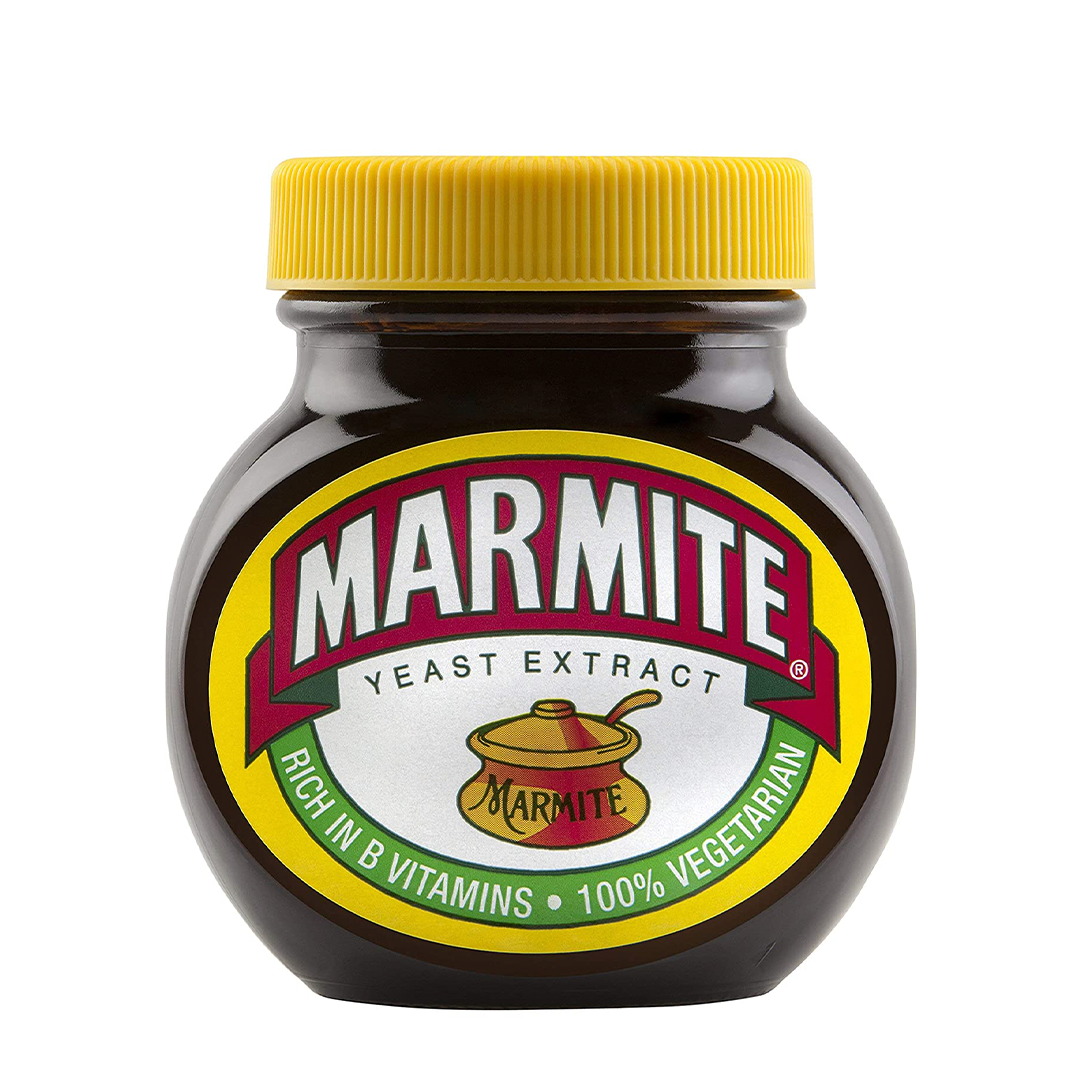I’m sick of having to look up what country an author is from to know which variant of teaspoon they’re using or how big their lemons are compared to mine. It’s amateur hour out there, I want those homely family recipes up to standard!
What are some good lessons from scientific documentation which should be encouraged in cooking recipes? What are some issues with recipes you’ve seen which have tripped you up?
Recipes should be written with the quantities in the procedure. So instead of reading
Mix flour, salt and sugar in a large mixing bowl
It should be
Mix flour (300g), salt (1/4 tsp), and sugar (20g) in a large mixing bowl
That way you don’t need to read/refer to ingredient list, read/refer to ingredient list, etc
I really appreciate the recent trend of done cooking websites to do this on mouseover. Best of both worlds for readability and convenience. Not great when you’re in the kitchen and not using a mouse, I’d hope a mobile or printable version just writes it out like you did there. Love Auto scaling recipes too where you can click to adjust number of servings, bonus points if they have some logic so they don’t tell you to use .71 eggs or something.
I’ve been cooking at home, and occasionally in restaurants, since I was about ten or so. So, 40ish years.
No single standard is better than the others. It does suck that there isn’t a single one that is used as a base, and then gets converted by the cook into their preferred units and structure, but even that has issues.
The good news is that most cooking, and even most baking, is very forgiving of the kind of discrepancies between sizes of lemons, onions, etc. You don’t really run into trouble until you’re dealing with things that react chemically based on the ratio of ingredients, which is still most common in baking, and not even all baking.
Even in those types of recipes, it’s usually flour that’s the problem, not leaveners, since flour compacts readily and to a high degree. But, then again, most modern recipes like that are going to be in weight measures, or in baker’s ratios. You’d be using a scale for the fiddly recipes.
So, generally, just guesstimate your produce size the first time you make something. It’s not going to be so far off that the results will suck if the dish itself doesn’t. Then you tweak things until it fits what you prefer, which is what happens anyway as you build your recipe book/collection.
My old recipe book had scribbled notes in the margins from years of refinements. When I copied that into a digital recipe manager, I added them in directly. Now, I’m able to just enter the original recipe, then add my notes as parentheticals or whatever as I refine.
Even with those detailed notes, a given recipe won’t always be reproducible as exactly the same. That’s because you just can’t standardize everything. You use good produce, there’s going to be varying water content, slight differences in flavor compounds, more or less sugars, so to get the same results over time, the cook has to know how to adjust for those things on the fly.
Of equal import is that no matter how scientific your process of recipe development is, the table is never the same as the cook. My taste buds and brain aren’t the same as my wife’s, my kid’s, my cousin’s, etc. So there’s limits to the benefits of standardized recipes on the plate.
Now, formatting? That’s a huge help.
You want your ingredient list to include instructions about when an ingredient is used in multiple places. You want lists broken down in sections when a recipe calls for multiple procedures (like making the main dish, a sauce, and a crust).
In the instructions, make sure the ingredient quantities are included for redundancy.
If there’s an instruction about duration that’s variable explain what the variables change. As in: bake for 10 to 15 minutes. Okay, great. What’s the difference? If my stove runs hot and I go for the short time, will I see golden brown, and will 15 be burnt or just really dark? Yeah, you can’t expect identical results from one circumstance to the next, but at least drop an “until golden brown” at the very minimum.
That applies to any variable, imo, but it can get to be too much detail in complicated recipe.
Cooking and baking are chemistry, physics. But they’re also an art. The more you try to strip a recipe of flexibility, the less successful it’s going to be for the next cook.
avoid rigid recipes and prefer cookouts
Are your oven’s thermometer and kitchen scale within their calibration due dates? Is that timer NIST traceable? The measuring cups ARE Class A glassware, aren’t they? Please, at least tell me you’re getting your ingredients from certified suppliers… No, the spices from the dollar store down the road are most definitely NOT on the approved list, no matter how cheap they were! Dear Lord, how are you going to blame the recipies when your kitchen is still operating in the Dark Ages?
At some point, food blogs stopped being about food and became personal memoirs with a side of seasoning. It probably started innocently enough—people sharing family recipes, adding a little background, a photo or two. But then came the SEO optimization, the Google gods demanding 1,500 words per post, and suddenly, every recipe for scrambled eggs begins with a story about someone’s childhood summer in Tuscany and how their Nonna taught them the sacred art of cracking an egg with one hand.
Now it’s standard: you search “how to make pancakes” and end up reading about a foggy morning in 2003, a breakup, a golden retriever named Milo, and how cooking became therapy. You scroll and scroll, dodging ads, autoplaying videos, and a pop-up asking you to “join the culinary journey.” Somewhere, buried like treasure, is the actual recipe—five steps long, could’ve fit on a Post-it note.
And yes, this is exactly that. This is the bloated preamble you didn’t ask for. You came here for temperatures and timings, and instead, you got this paragraph complaining about the very thing it’s doing. You’re now part of the cycle—scrolling, sighing, wondering when we collectively decided that roasting vegetables required a narrative arc.
Anyway, here’s the recipe. Probably. Keep scrolling.
you may like publicdomainrecipes.com, a no-bs recipe website (doesnt have a lot of stuff, but you need to start somewhere)
Not a scientist, but an easy improvement would be to use weight instead of volume for most measurements. “A cup of flour” can vary greatly depending on how compressed/dense it is.
I don’t
- Crack open 11% alcohol IPA that taste like battery acid
- Start cooking
- When in doubt, pour the IPA into the meal
Perfect meal everytime
Parametric recipes are great. The central ingredient is quantity 1 and everything else is a ratio by weight. You then scale it to your needs. So an equilibrium brine would be.
1 meat 1 water 0.03 salt Brine for 1 day per 2 inch of thickest section.
They don’t work for everything. So when baking a loaf of bread time and temp are spefic to loaf size. It still works for a batch of bread dough however.
This also helps you think in ratios which help general recipe construction. Once you know what flour to egg radio you like for your bread you can alter recipes to your preference.
This would only make sense, if all people were baking with the exact same ingredients, in the exact same environment, with the exact same equipment. You know, like in a factory.
For households and the like, it makes sense to have a bit of variation, until you find the way that makes it perfect for you.
People should try to think of recipes as performance notes, not as magical formulas. “This is how I made this, this time.”
This goes for baking too. Baking is no more science than cooking, and cooking is no more an art than baking. People who claim otherwise annoy me.
You need to figure out what ratios of what, do what in your recipes, and then explore how that can change with different brands/varieties of the same ingredients, different ovens, humidities, elevations if you travel, etc. Book learning can only get you so far, you need to put in the kitchen time to really understand.
The art of making good food is in being able to recreate and adapt all the science experiments you did.
As someone who bakes bread, and sometimes biscuit, pancake, and cookie type things, I feel this way also. But I wonder if the reputation for needing precision doesn’t stem from something I don’t bake, like cakes.
This is pretty much how so many experienced home cooks eventually get to the point where they can eyeball the amount of each ingredient they need.
not exactly an answer to what you ask but I wanted to share this knowledge: https://developers.google.com/search/docs/appearance/structured-data/recipe
its a standard(ish) schema that many popular recipe websites use, so you can very easily parse them and do unit conversions
Cool stuff, thanks for sharing!
So you’re basically telling chefs to research and write out for you all the variables?
Baking is a science, cooking is an art.
Every recipe handed down through generations has notes, changes, etc…that’s what makes it beautiful.
I am lucky to have my grandmother’s cook book with 3x5 index cards hand written, with the date and whom the recipe is from…but I don’t use lard in her Ginger Bread recipe from 1932.
There is no exact science you’re looking for, the garlic grown here won’t be the same as the garlic grown there, your experience won’t be the same as someone who has cooked for years saying ‘fuck it, throw that in there and let’s see what happens’.
…lol, amateur hour
(to be clear, I was saying ‘amateur hour’ tongue-in-cheek ;)
I am lucky to have my grandmother’s cook book with 3x5 index cards hand written, with the date and whom the recipe is from…but I don’t use lard in her Ginger Bread recipe from 1932.
That’s wonderful! All I got was a disintegrating notebook of delights. I do like deciphering it but not when I’m hungry!
I get it!
Now to really boil your noodle I used to work with a lot of (French) chefs who when they wrote out recipes for magazines and such (pre internet) they DGAF if it was accurate or not… “if zey screw eet up, zey sink it is zere fault”
Haha I wonder if they just didn’t want to share their secrets!
The only secret French chefs have (and they will deny this) is that they love Ketchup
Peer review…
Too many cooking sites are let’s exchange your recipe and end up with either stuff missing or absurdly high amount of sugar (as a rule of thumb divide by 2 the amount of sugar) or a lack of salt/spice even when they’re notsimply forgotten.
Published books tends to be a bit better as in principle they’re revised.
Peer review is how scientists correct that. Often it’s as simple as on figure 2, the labels are too small and sometimes it’s I don’t get how you’ve built your experimental setup can you clarify this section? It’s rarely catching biq mystake but really improves overall quality
At the end of the second paragraph, you’re missing a space between “not” & “simply”.
In you third paragraph, you used the singular “tends” instead of the plural “tend”. In addition, though I believe the sentence to be grammatically correct even without them, adding commas before & after “as in principle” would make the sentence a bit clearer.
Finally, your last paragraph. The second sentence is quite long, it would be more readable if you added commas before the “and” & after the second “it’s”. A comma could be placed just after “Often”, but the sentence remains legible even without it. The sentence could use quotation marks to improve readability further, which would end the sentence on a question mark followed by an ending quote. This would be grammatically correct in American English, but as the sentence is not a question, a period should be added to the end. While it may have been intentional, for comedic effect, “biq” should be “big” & “mystake”, “mistake”. If I’ve understood the sentence correctly, the newly-corrected “mistake” should be in its plural form, “mistakes”, and be followed by a comma. The sentence should also end with a period.
Autist and scientist here: you’re thinking of baking. Baking is the science one, cooking is infuriating because all of those really vague and inaccurate instructions are in fact as precise and accurate as they need to be. Seasoning is done with the heart, you do have to stir or knead u ntil it “looks right”, “a handful” is the right amount to add. The only way to find the “right” amounts is to cook over and over until you instinctively know what enough looks like.
Anyway the ingredient I really really hate is from Jamie Oliver’s “working girl’s” pasta, where he lists “2 big handfuls of really ripe tomatoes”. I HAVE CANNED TOMATOES YOURE GETTING CANNED TOMATOES JAMIE, I DONT HAVE FUCKING TIME TO GO LOOKONG FOR REALKY RIPE TOMATOES
Also standard teaspoon is 5ml. Just use that and taste to see if it needs more.
This may be true for experienced cooks but beginners need more precise instructions that are not “Until it tastes good”.
Thinking back on being a beginner, my problem wasn’t that instructions were imprecise, but more that I didn’t interpret “to taste” as a real instruction. It means I should fucking taste my food as I go, when at the time I would just taste it at the end.
So many bad meals can be avoided by sampling them over time and adjusting. I should know, having made too many.
I would classify this as an example of cooking logic (my own phrase) that needs to be learned. A lot of good recipes will assume the cook understands fundamental concepts like this, but it’s not necessarily the recipe’s job to teach you. Same as how IKEA assembly instructions might seem cryptic at first, but really boil down to using 3-4 different techniques to screw wood panels together. I do think there’s a general lack of awareness that cooking has a separate logic, and this means a lot of people never teach it to others.
Yes, and I’m explaining that a significant part of being an experienced cook is just the understanding that cooking isn’t precise. You do not need to work out what sized teaspoons the author was using, just get any of the teaspoons out of your drawer, fill it up, mix it in, and then taste to see if it seems ok. The final result will depend on factors you can’t control for - the conditions ingredients were grown in, the age of spices when they were ground, the specific cultivar you’re using - and the author doesn’t have your personal tastes, so while they can tell you the ingredients to use they can’t give you the precise amounts that you’ll enjoy. To find that out you need to make the dish repeatedly with small adjustments until you hone in on your tastes.
That may be true.
But for anyone not reading it and getting instructions like “Go by feeling” when I don’t even know if the dish tastes as it should be is like requesting me to run before I can even walk.And this cooking lession will sooner or later be revealed to a beginner but it’s very frustrating to think one cannot cook while it’s just a smaller skill-issue someone needs to overcome.
Even with baking, once you get good and learn what ingredients can be fanagled with, there’s definitely wiggling room like with cooking.
There is wiggle room in baking, but it relies on a deeper understanding of the ingredients than cooking. If a recipe wants 250g of flour and you only have 200g, you have to adjust the amounts of sugars and fats as well, and while the flavourings have a lot more wiggle room, some of them still require swapping out base ingredients for them to maintain the correct ratios.
With cooking if a recipe calls for 500g of potatoes and you only have 300g you can just put 300g in and keep cooking. Recipe calls for 300g tomatoes but you don’t want to waste the last quarter of your 400g can? We’re having an extra tomato-y sauce tonight. You have a lot more room to change ingredients around without it having a significant effect on the rest of the recipe.
That man fucks me right off. “Here’s how you can feed your family for a fiver”
Proceeds to use an entire fucking spice rack that’ll cost about 80 quid to get set up properly.
That’s not totally disingenuous. If you’re cooking for yourself rather than eating out or buying ready made things and you plan to do that a lot of it, some outlay on things that get used across multiple recipes over long periods (can be years with spices) is reasonable to expect and also not to be costed in recipe estimates. What exactly is reasonable to expect someone to have in their pantry already for a recipe is very subjective so what to me seems fair to assume won’t seem so to others, but there are assumptions you can make. You wouldn’t for example criticise a recipe for failing to incorporate the cost of a pan if it tells you to pan fry something or a spoon to stir it or the cost of the water out of the tap. Most of those examples are equipment but I think there’s an extent to which you can write recipes with similar givens for ingredients as well, otherwise it becomes untenable to estimate costs. You don’t typically have to use the same spices as recommended by a recipe either. For some it’s essential but for many it’s just what you like or what you have so, don’t buy 80 quid of spices for one recipe, but if you can figure out which are most important for that recipe and which you also really like the taste of, buy just those and use them in that recipe and many others going forward. You gradually add to your collection as you try new things and when you have some spices and a recipe calls for you to get more, it’s not such a stretch because you’re not buying a ton of them at once just the few you don’t have and consider it worth trying. It takes a long time to get through spices and eventually you get to a point where you have most of the spices referenced in a given recipe or decent substitutes or you only need like 1 extra one that will help you cook more things in future. If you’re sure you won’t use a spice outside of the one recipe you’re looking at, just skip it.
Sorry sib, but you gotta buy the spices. They’re like salt and oil, or pots and pans - you are almost always going to be using some of them, no matter what you’re cooking. It helps a lot to find an Indian supermarket, because you can get big packets of spices for much cheaper than the bottles in regular supermarkets.
Also too many spices has never been an issue I’ve had with Jamie, if anything I feel he overrelies on access to good quality ingredients. Yotam Ottolenghi is the spice dickhead, most of his recipes require a specific overpriced spice blend only he sells.
All solids should be listed by weight.
All liquids should be listed by volume.
SI units only. (Grams for solids, mL for liquids)
More graduated cylinders and volumetric flasks in the kitchen please.
We should all use Einstein-Landauer units.

Why would you want anything by volume? Mass is so much easier. 50 ml of honey is way more annoying to get into a recipe than dumping it right into whatever container the rest of the ingredients are in while it’s sat on a scale.
Sure, we could say viscous liquids can use mass. I’d say most liquids with a viscosity close to water will be easier to measure out by volume than risk over pouring when going right into weigh boat / mixing bowl.
I agree. Mass all the way. It’s especially complicated when the liquids are viscous and stick to your measuring vessel.
The only time volume is permitted is if it’s too light for a typical kitchen scale to measure.
5ml of vanilla is a lot easier to measure than by weight would be
I thought SI Unit for volume is m3
True, but square and cubic units are inconvenient due to the way prefixes work. Use liters to solve that problem.
same thing, one cubic centimeter is one ml
But 1L is not 1m³
Liters are non-SI
1L is 1dm³ (10cm³)
They aren’t “official” SI units but they dont require funny conversions and i’d much rather see liters then teaspoons
Yeah I would also preffer liters even over m³. Was being pedantic on you saying it’s the same thing
Not any kind of scientist, but an adventurous home cook
I’d really like the USDA/FDA/etc. (maybe not under the current administration) to publish sort of a food safety handbook full of tables and charts for stuff like canning, curing meats, cooking temps, etc. targeted to people like me.
I’ve recently been experimenting with curing meats, I’ve done bacon, Montreal style smoked meat, corned beef, Canadian bacon, and kielbasa.
And holy fuck, is it hard to find good, solid, well-sourced information about how to do that safely.
And I know that information is out there somewhere, because people aren’t dropping dead left and right of listeria, botulism, nitrate poisoning, etc. because they ate some grocery store bacon.
I just want some official reference I can look at to tell me that for a given weight of meat, a dry cure should be between X and Y percent salt, and between A and B percent of Prague powder #1, and that it needs to cure for Z days per inch of thickness, and if it’s a wet brine then it should be C gallons of water and…
When I go looking for that information either I find a bunch of people on BBQ forums who seem to be pulling numbers out of their ass, random recipe sites and cooking blogs that for all I know may be AI slop, or I find some USDA document written in legalese that will say something like 7lbs of sodium nitrite in a 100 gallon pickle solution for 100lbs of meat, which is far bigger than anything I’ll ever work with, and also doesn’t scale directly to the ingredients I have readily available because I’m not starting with pure sodium nitrite but Prague powder which is only 6.25% sodium nitrite.
They do publish pretty good information about home canning, though in batch sizes more and more of us aren’t going to do because we’re not putting up 10 acres worth of vegetables.
deleted by creator
Those are great, definitely gonna be saving those
I basically want that kind of guide for curing meats and other such things
Also there are some blind spots, something I was just looking for recently is canning some of my home-cured meats to save some space in my freezer. I know it’s a theoretically possible undertaking, I can go to the store and buy a can of corned beef after all
But reputable sources like the USDA and NCHFP are kind of silent on it and pretty much leave it at “we can’t recommend doing that, curing can change the density and water content and such and we haven’t gotten the funding to test it.”
I can find people who have canned their own bacon and such, and apparently not died of botulism, but I don’t exactly trust the processes cooked up by some off-grid homestead tradwife mommy-blogger.
And holy fuck, is it hard to find good, solid, well-sourced information about how to do that safely.
I have a similar experience with some basic fermenting (e.g. kombucha, pickling). I’m growing cultures of microbes like yeast and bacteria and while I’ve been able to spot some obvious unwanted cultures on failed batches, there’s a surprising absence of reputable info and unfortunately I’ve had to get by on the brewing equivalent of gym broscience, mostly on reddit, some of which I’ve spotted is misinformation. The SEO AI-generated articles plaguing search results don’t help either.












